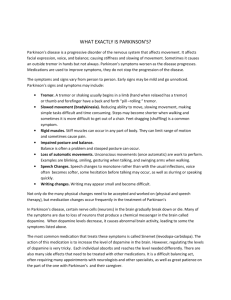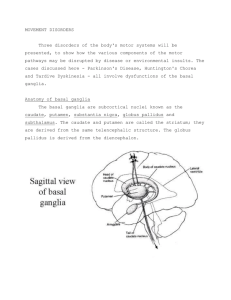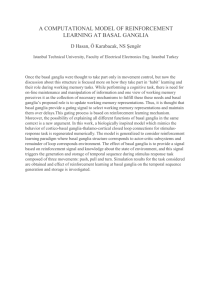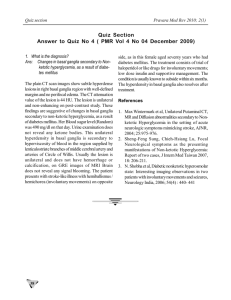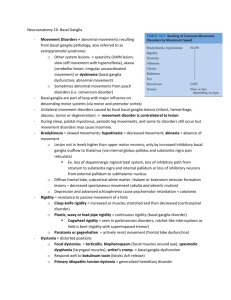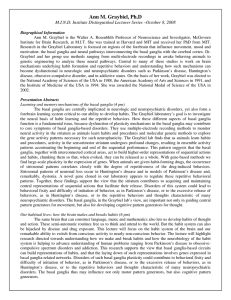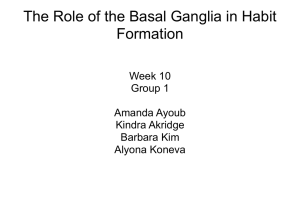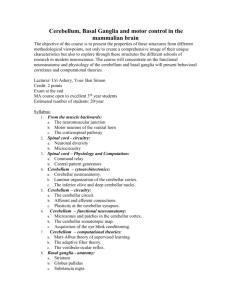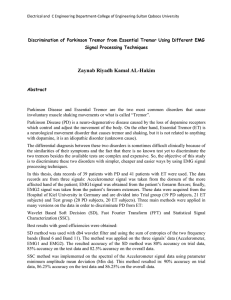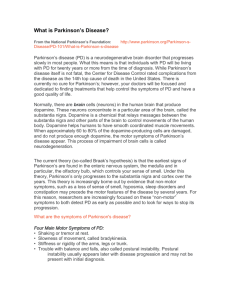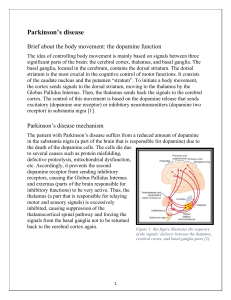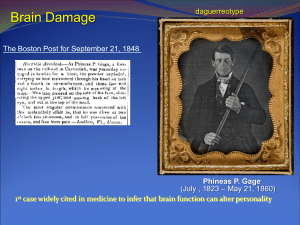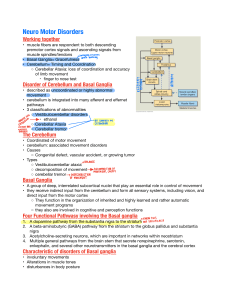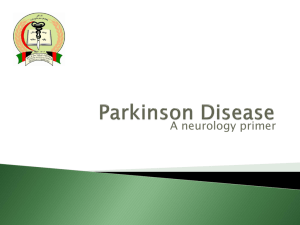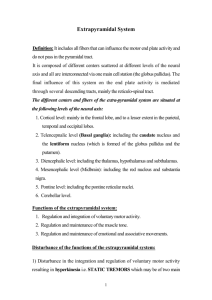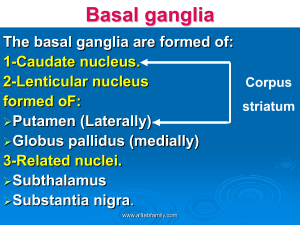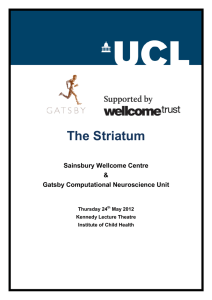3rd PBL case.pptx
advertisement
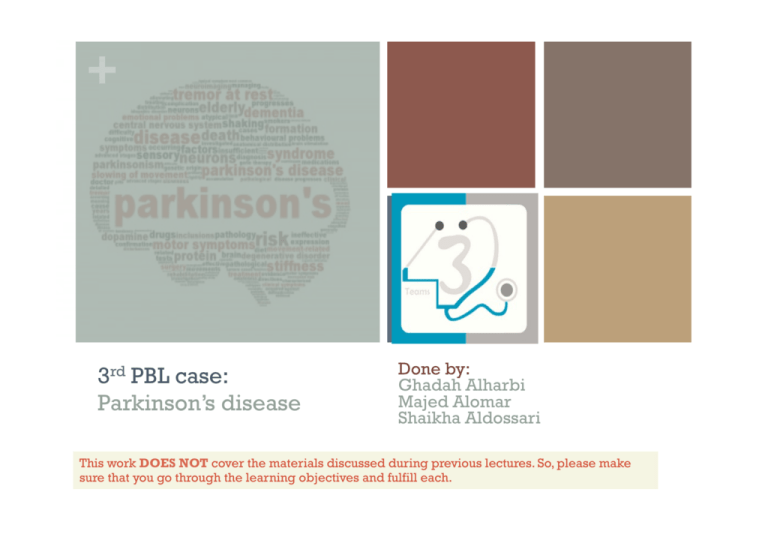
+ 3rd PBL case: Parkinson’s disease Done by: Ghadah Alharbi Majed Alomar Shaikha Aldossari This work DOES NOT cover the materials discussed during previous lectures. So, please make sure that you go through the learning objectives and fulfill each. + Learning Objectives: + Parkinson’s disease: n Is a degenerative disorder of the central nervous system. The motor symptoms of Parkinson's disease result from the death of dopaminegenerating cells in the substantia nigra, the cause of this cell death is unknown, but several factors appear to play a role, including specific genetic mutations and/or environmental triggers. (e.g. exposure to certain toxins, oxidative stress…etc) A short animation video Click here. + + New terms: n Tremor: limbs. An involuntary trembling of the body or n Stiffness: Lacking ease or comfort of movement. n Cogwheel rigidity: Rigidity in which the muscles respond with cogwheel-like jerks to the use of force in bending the limb. + Signs and Symptoms: n Tremor at rest. (Static tremor) n Stiffness. n Slow movement. n Sleeping problem. (because Dopamine plays a role in regulating sleep-wake cycles in Nucleus Accumbens) n Decreased facial expression. n Low tone voice. n Cogwheel rigidity. n Serious difficulty in initiating movement. (Akinesia*) n Postural instability caused by impaired postural reflexes; leading to poor balance.* n Impaired ability to swallow (Dysphagia).* *Guyton and Hall textbook of medical physiology pa. 693 + A video that explains the Parkinson’s disease gait Click here. + Investigations: The image shows a reduction in uptake of 18F DOPA, and B-CIT uptake by putamen of patients with Parkinson disease, notice that the uptake correlates with the disease progression. Severity = Uptake + Treatment: n Levodopa. (because it crosses BBB) n Peripheral decarboxylase inhibitor (PDI) e.g. Carbidopa. (it is given to reduce the nausea, vomiting, and to inhibit the peripheral decarboxylation è mask the side effects of levodopa). + Notes: n Possible causes of tremor: Anxiety, thyrotoxicosis, old age, basal ganglia problems. n Possible causes of stiffness: Muscle problem, Impairment of control of muscle tone, Joint problem. n Possible causes of slowness of body movement: Depression, Myopathy, Hyperthyroidism. n Dopamine barrier. does not cross the blood-brain + n Remember: Anatomy of the basal ganglia: Basal ganglia are a group of interconnected subcortical nuclei that represent one of the brain's fundamental processing units. They are: Striatum, Globus pallidus, Substantia Nigra (pars compacta,reticulata), Subthalamic nucleus. n Basal ganglia’s neurotransmitters: GABA, Dopamine, Acetylcholine, norepinephrine, serotonin and enkephalin. n Functions of the basal ganglia: ü Controls Cognition. ü Movement Coordination. ü Voluntary Movement. + Some Videos Explaining Basal Ganglia: n http://www.youtube.com/watch?v=-5PXAUdWDgU&sns=em n http://www.youtube.com/watch?v=TWAKheHlDHs&sns=em n http://www.youtube.com/watch?v=J56CFExkHgE&sns=em (Thanks to Lama Al Tawil) + Additional Readings: n http://en.wikipedia.org/wiki/Parkinson's_disease n http://www.mayoclinic.com/health/parkinsons-disease/ DS00295 n https://www.youtube.com/watch?v=u2RlzL7jJRY n http://www.dartmouth.edu/~rswenson/NeuroSci/ chapter_8C.html
